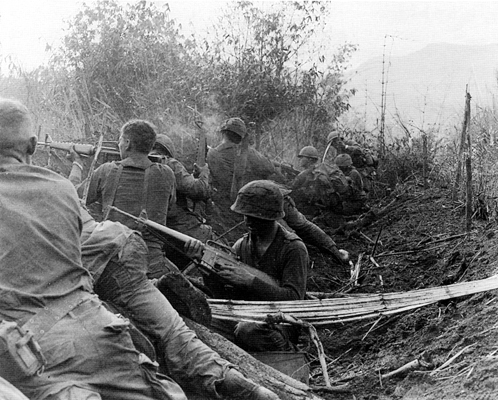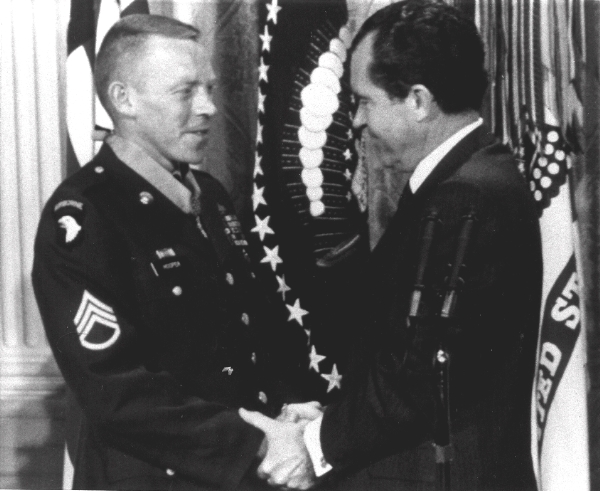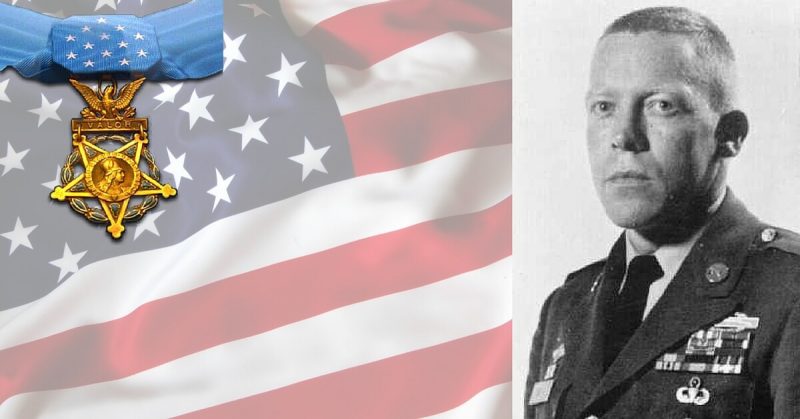It is often the case that the men who give you the most trouble in garrison are exactly the sort of man that you want with you in combat. Such was the case of soldier Joe Hooper who had a penchant for picking up awards for valor in combat along with an Article 15 or two for disciplinary issues.
In fact, less than a year prior to conducting the action which awarded him the Medal of Honor he had been busted down in rank back to Corporal.
However, by the time that action came around he had earned it back through sheer competence. During his two tours in Vietnam, he is credited with killing over 115 of the enemy, 22 of which would come on a single day during the Tet Offensive in 1968.
Despite being heavily wounded, Joe Hooper refused evacuation and instead led his men on a vicious assault on a heavily defended Vietnamese system of bunkers and trenches.
Fighting with a rifle, pistol, and often hand to hand combat, Joe Hooper was a one-man bunker buster and source of inspiration to every man who saw him dart across the battlefield that day in Vietnam.
Born to Fight
Joe Hooper was born in August 1938 in Piedmont South Carolina, but eventually made Moses Lake, Washington, his home as a child. Growing up, Hooper displayed exceptional athletic abilities and was actually the state scoring champion in football and a top national runner in track.
In 1956, he had decided on a career in the military and enlisted in the Navy. Enjoying a fairly routine career aboard the USS Wasp and USS Hancock, he exited the Navy in 1959 as he considered furthering his education.
Realizing that civilian life was not for him, Hooper decided to reenlist in 1960 and as the story goes because the Navy recruiter was out to lunch, he just decided to join the Army. It was in the Army that he would find his unique skill for gallantry and unprecedented lethality on the battlefield.
He would spend his time with the 101st Airborne Division and served various deployments to South Korea and Panama prior to Vietnam. It is also over these next seven years where Hooper would develop his reputation for being hard to control and frequently looking for a fight.
He was the subject of various Article 15 disciplinary hearings, but with the fighting in Vietnam picking up steam he found a place in an Army in great need of such men. Just after being reduced in rank in July 1967, he was deployed to Vietnam where he was to serve as a squad leader later that December.
Hooper would arrive just in time for the upcoming Tet Offensive where his gallantry would set him apart from the others outside Hue City.
A Born Bunker Buster
While serving as a squad leader, then Sgt. Hooper and Company D were tasked with assaulting a heavily defended enemy position along the riverbank near Hue.
As they approached, Hooper’s squad came under heavy machine gun, rifle, and rocket fire which began landing with devastating effect. Recognizing the source of the fire, Sgt. Hooper rallied together several men and assaulted the first set of bunkers he came across.
Having received substantial wounds himself during his first assault, Hooper refused evacuation and rather chose to dart across the field of fire to pull friendly wounded soldiers to cover. He then went on to personally take out three additional bunkers with hand grenade and rifle fire as he renewed the assault.
Upon noticing that two North Vietnamese soldiers had attacked and wounded the Chaplain, he made it a particular point to eliminate both men. At this point, a North Vietnamese officer attacked Hooper at close range forcing him to kill the officer with his bayonet.
Still not done, when he realized that his men were taking heavy fire from a nearby house, he proceeded alone towards the building and killed every occupant with hand grenades and rifle fire. With fresh grenade fragment wounds to add to his collection, he then noticed a series of four bunkers concentrating their fire on his men.

It was at this point, that his time is a top high school athlete would come in handy as he picked up a bag of grenades and simply ran the length of the bunker line tossing in a grenade into each one as he ran past. The battle continued to rage on and Sgt. Hooper would continue to ignore his own wounds as he eliminated some of the final pockets of resistance and pulled fellow soldiers to safety.
He continued to refuse treatment of his wounds until the final defensive line was reorganized and, in fact, would refuse complete evacuation until the next morning when he knew the fighting was over.
Most Highly Decorated Soldier
For his actions on February 21, 1968, Sgt. Joe Hooper would be awarded the Medal of Honor. He briefly left the Army after returning to the United States later that year but returned to duty as he found civilian life still lacking. Over the next year, he would serve in various roles as a platoon sergeant but was able to secure a second tour to Vietnam in April 1970 as a Pathfinder with the 101st Aviation Group, 101st Airborne Division.
He continued to serve with his typical gallantry during this time and was even given a direct commission as a second lieutenant despite only having a GED along with additional awards for valor.

Although he had hoped to remain in the Army for a full career, he was forced to retire in February 1974 as a first lieutenant. He served some additional time in the reserves but was completely separated from military service by September 1978.
The man whom the entire North Vietnamese Army couldn’t seem to kill passed away in May 1979 at the age of 40 from a cerebral hemorrhage. His struggles with alcohol were well documented.
Joe Hooper would pass away as the most highly decorated soldier of the Vietnam War with a Medal of Honor, 2 Silver Stars, 6 Bronze Stars, and 8 Purple Hearts.
